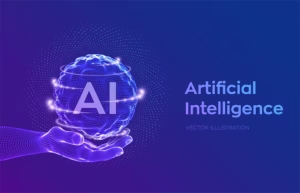Artificial Intelligence (AI) is rapidly reshaping industries, creating new possibilities, and driving innovation. From autonomous vehicles to smart assistants, AI’s integration into our daily lives is undeniable. While the benefits are vast, there is growing concern about how AI will affect the global workforce. Will it create more jobs, or will it replace human workers altogether? In this article, we’ll explore the potential impact of AI on global employment and what lies ahead for workers worldwide.
1. The Rise of Automation: Opportunities and Threats
AI has already begun automating tasks that were once performed by humans, particularly in industries like manufacturing, retail, and customer service. Tasks such as inventory management, data entry, and even some customer service functions are being outsourced to machines. This is often viewed as a double-edged sword.
Opportunities:
Increased Productivity: Automation can lead to significant increases in productivity. AI can perform repetitive tasks more efficiently than humans, freeing up employees to focus on more complex, value-added tasks.
New Industries: As automation increases, new industries and job opportunities are also emerging. For example, AI specialists, data scientists, and machine learning engineers are in high demand, offering exciting career paths.
Better Job Design: Automation can take over mundane, repetitive tasks, allowing employees to engage in more creative, strategic, and human-centered work.
Threats:
Job Displacement: One of the most significant concerns is the potential for job loss. The World Economic Forum’s 2020 report estimated that 85 million jobs could be displaced by automation by 2025. Sectors like manufacturing, logistics, and administrative work are particularly vulnerable to AI-driven disruptions.
Job Polarization: AI might contribute to job polarization, where high-skill, high-paying jobs increase, while low-skill, low-wage jobs decrease. This could lead to increased inequality and a shrinking middle class.
2. AI and the Transformation of Traditional Jobs
While automation might eliminate certain jobs, AI also has the potential to transform existing jobs. Many jobs that involve routine or manual tasks will be augmented with AI tools, enhancing workers’ capabilities rather than replacing them entirely.

Healthcare: AI has already demonstrated its value in the healthcare industry. Medical professionals are using AI for diagnostics, personalized treatment plans, and even robotic surgeries. While AI may take over some administrative tasks, it will enable doctors, nurses, and technicians to focus on patient care, improving health outcomes.
Education: In the education sector, AI is revolutionizing how teachers interact with students. Adaptive learning technologies allow for more personalized instruction, helping educators cater to individual student needs. However, AI is unlikely to replace the crucial role of teachers. Instead, it will help them be more effective in their teaching methods.
Creative Industries: In fields like design, journalism, and entertainment, AI is becoming a powerful tool for creating new content. For example, AI is already being used in scriptwriting, music composition, and even graphic design. While AI can assist in the creative process, human creativity remains essential for producing truly innovative and emotionally resonant works.
3. The Skills Gap: A Call for Reskilling and Upskilling
As AI continues to evolve, it will create a significant demand for new skills. The jobs of the future will require workers to be proficient in technology, problem-solving, and creativity. While this presents an exciting opportunity, it also poses a challenge: many workers currently lack the necessary skills to thrive in an AI-driven economy.
The Role of Education and Training
Governments and private sector companies must prioritize reskilling and upskilling programs to help workers transition into new roles. Investing in education and lifelong learning is critical to ensuring that individuals are prepared for the jobs of tomorrow.
AI Literacy: Understanding AI, its capabilities, and its ethical implications will become an essential part of education in the future. Just as basic literacy in reading and math is fundamental today, AI literacy will be key to navigating the evolving job market.
Collaboration Between Humans and Machines: Rather than viewing AI as a competitor, workers can learn to collaborate with AI. The future of work is likely to involve a hybrid model where humans and machines work together to achieve better outcomes. This could mean humans handling complex decision-making, emotional intelligence, and creativity, while AI manages routine data processing and analysis.
Embracing Change
To successfully adapt to this new landscape, workers must embrace change and be willing to learn continuously. By fostering a culture of adaptability and innovation, we can ensure that the workforce is not only equipped to meet the demands of an AI-driven economy but also empowered to thrive within it.
AI and Economic Inequality: A Growing Concern
The rise of artificial intelligence (AI) poses significant questions about income inequality and wealth distribution. The rapid growth of AI technologies tends to concentrate power and wealth in the hands of major tech companies like Google, Amazon, and Microsoft. This raises concerns about how smaller businesses and individual workers can compete in an economy increasingly driven by AI.
distribution. The rapid growth of AI technologies tends to concentrate power and wealth in the hands of major tech companies like Google, Amazon, and Microsoft. This raises concerns about how smaller businesses and individual workers can compete in an economy increasingly driven by AI.
The Gig Economy
AI-driven platforms are also contributing to the expansion of the gig economy, where individuals take on short-term, flexible jobs instead of traditional full-time roles. While this model offers flexibility, it often lacks essential job security, benefits, and stability for workers.
Addressing Economic Disparities
To tackle these pressing issues, policymakers and businesses must collaborate to ensure that the advantages of AI are distributed more equitably. This could involve implementing progressive tax policies, enhancing social safety nets, and promoting inclusive growth strategies that support all sectors of the economy.
By fostering a more equitable environment, we can harness the potential of AI to benefit a broader range of individuals and communities, rather than allowing it to exacerbate existing inequalities.
